BLUE BOAR
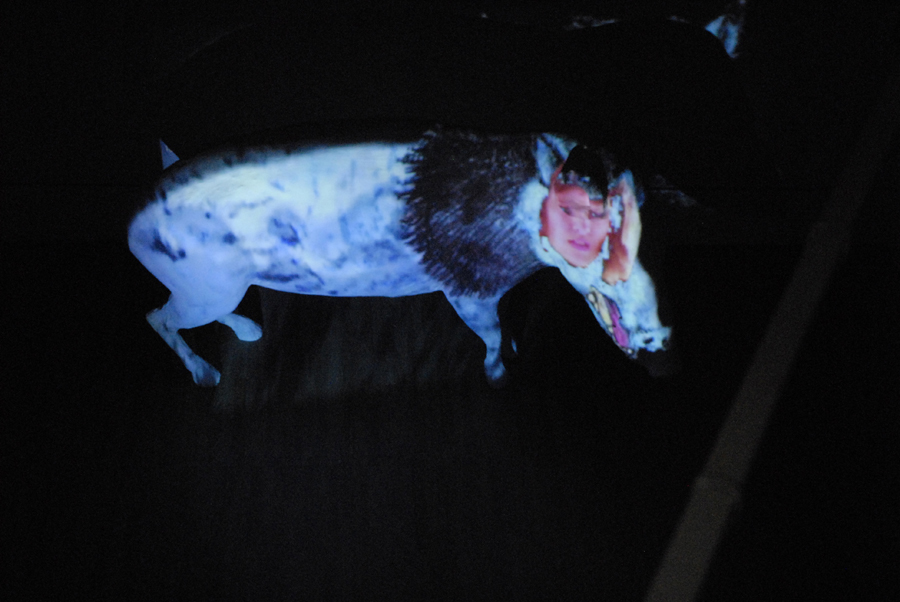
Interactive Installation & Colonial Vegetables Sewn Sampler with Face Capture
Blue Boar situates a participant in the Salem witch trial of my 10th great-grandmother, Mary Bradbury.
Using a programmatic and sculptural interface, the piece situates a visitor at the notorious 17th century Salem witch trials in Massachusetts. One of the claims against which my ancestor was convicted was that she had metamorphosed into a blue boar in her garden. When encountering the Blue Boar artwork, a visitor is virtually placed in the stance of the accused as his facial likeness is live-captured and projected, as part of a luminous blue boar apparition, onto a sculpted pig form.


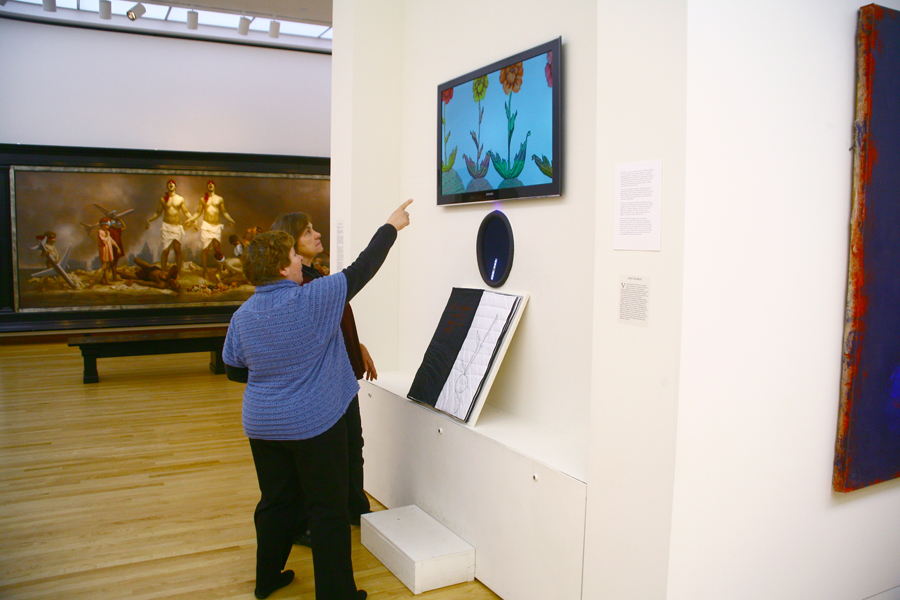
Blue Boar was the inaugural exhibition in the New Britain Museum of American Art's New Media Space within the Contemporary Gallery, Oct 2011 - Jan 2012.
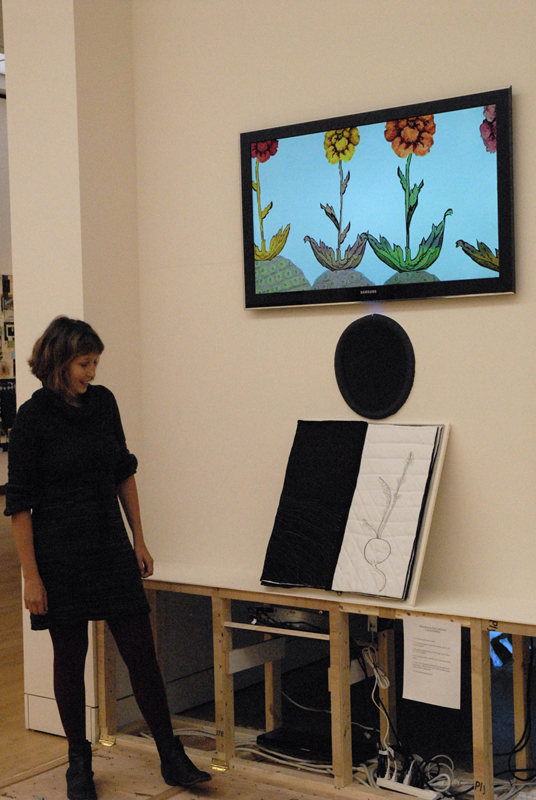
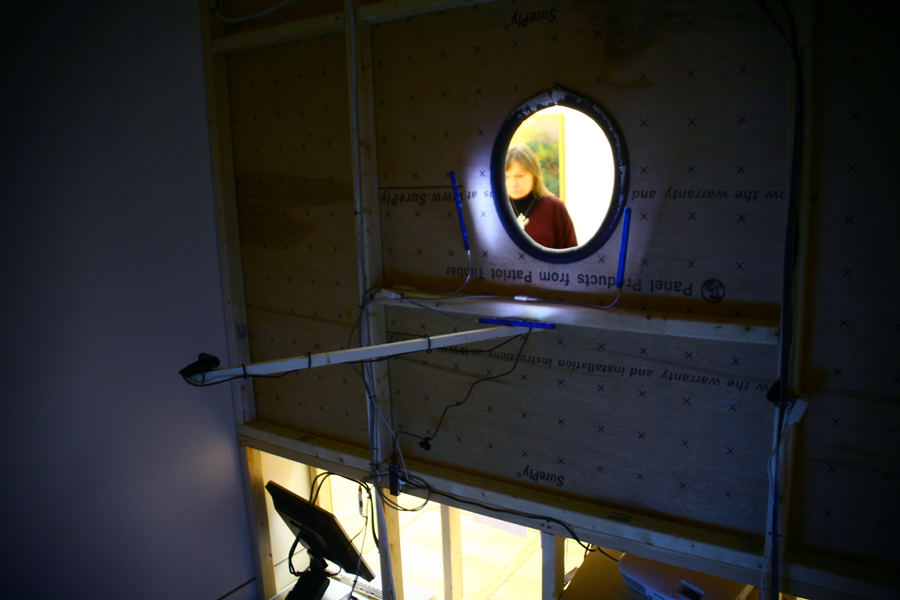
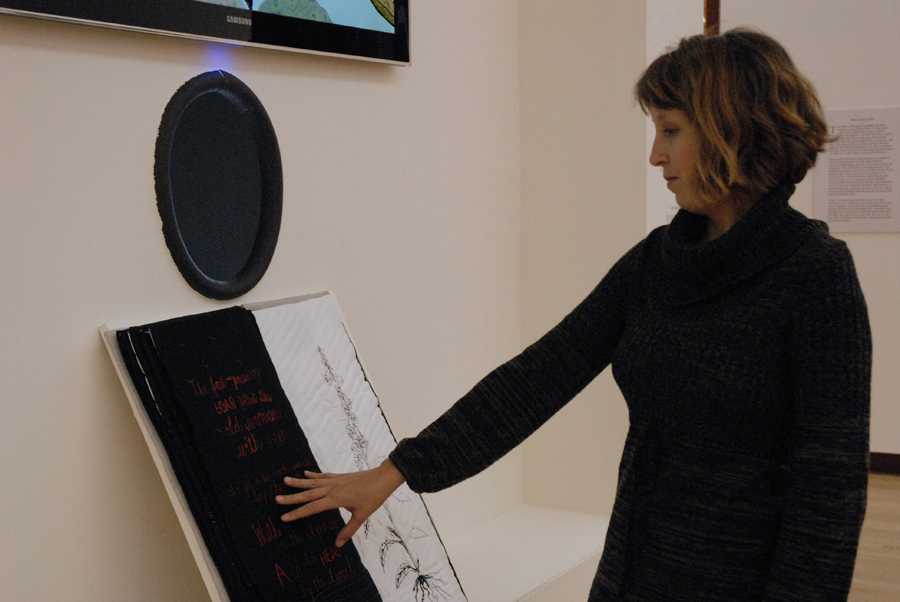


Blue Boar Genealogies
The installation Blue Boar situates a participant in the imagination space of those attending the 1692 Salem witchcraft trial of my 10th great-grandmother, Mary Bradbury. To emphasize the absurdity of the scenario, I pare down a historic story to magnify the details —that a woman was convicted of witchcraft for having allegedly turned herself into a blue boar. I use an imagined witness -the vegetables- to tell their side of what really happened behind the gate.
Long before the witch trials, the Carr and Bradbury families of Salem had a history of contention. The discord was based on land disputes, broken love affairs and social allegiances common to a small town. For years, the Carrs conjured tales about Mary, the Matriarch of the Bradbury Family. The accusations included Mary having brought illness upon the sick, appearing menacingly near the windlass of a ship, and turning herself into a blue boar. Upon her conviction, Mary was 75 years old and a 'respected' member of the church and community. Despite her piety, the Carrs' stories were enough to lead to Mary's sentencing. It was young Richard Carr who claimed that he, his father, and Zerubabel Endicott were traveling down the road one day on horseback, when the blue boar incident occurred.
Richard Carr and Zerubabel Endicott's 1692 Testimonies:
“...about thirteen years ago, presently after some difference that happened to be between my honored father, Mr. George Carr, and Mrs. Bradbury, the prisoner at the bar, upon a Sabbath at noon, as we were riding home, by the house of Captain Tho:Bradbury, I saw Mrs. Bradbery goe into her gate. Turne the corner. And immediately there darted out of her gate a blue boar, and darted at my father’s horse’s legs, which made him stumble; but I saw it no more. And my father said, 'Boys, what do you see?' We both answered, A blue boar.
...Zerubabel Endicott testifieth and saith, that I lived at Mr. George Carr, now deceased, at the time above mentioned, and was present with Mr. George Carr and Mr. Richard Carr. And I also saw a blue boar dart out of Mr. Bradbury’s gate to Mr. George Carr’s horse’s legs, which made him stumble after a strange manner. And I also saw the blue boar dart from Mr. Carr’s horse’s legs in at Mrs. Bradbury’s window. And Mr. Carr immediately said, Boys, what did you see? And we both said, A blue boar. Then said he, From whence came it?And we said, Out of Mr. Bradbury’s gate. Then said he, I am glad you see it as well as I.”
My pairing of object/media interaction in the Blue Boar installation recalls the scene in 1692 Salem. The railing and stool ground the participant in the courtroom. The switching video manifests the frenzied imaginations of those in attendance. The raked placement of the boar allows the reader to see him or herself projected, experiencing a
…detachment
…displacement
…beheading